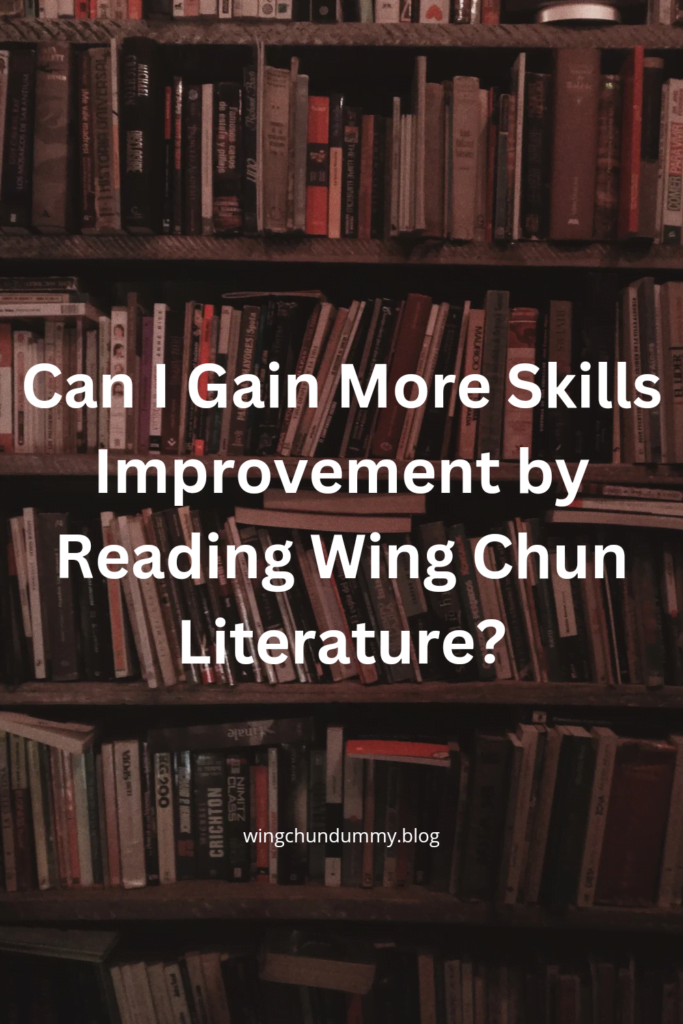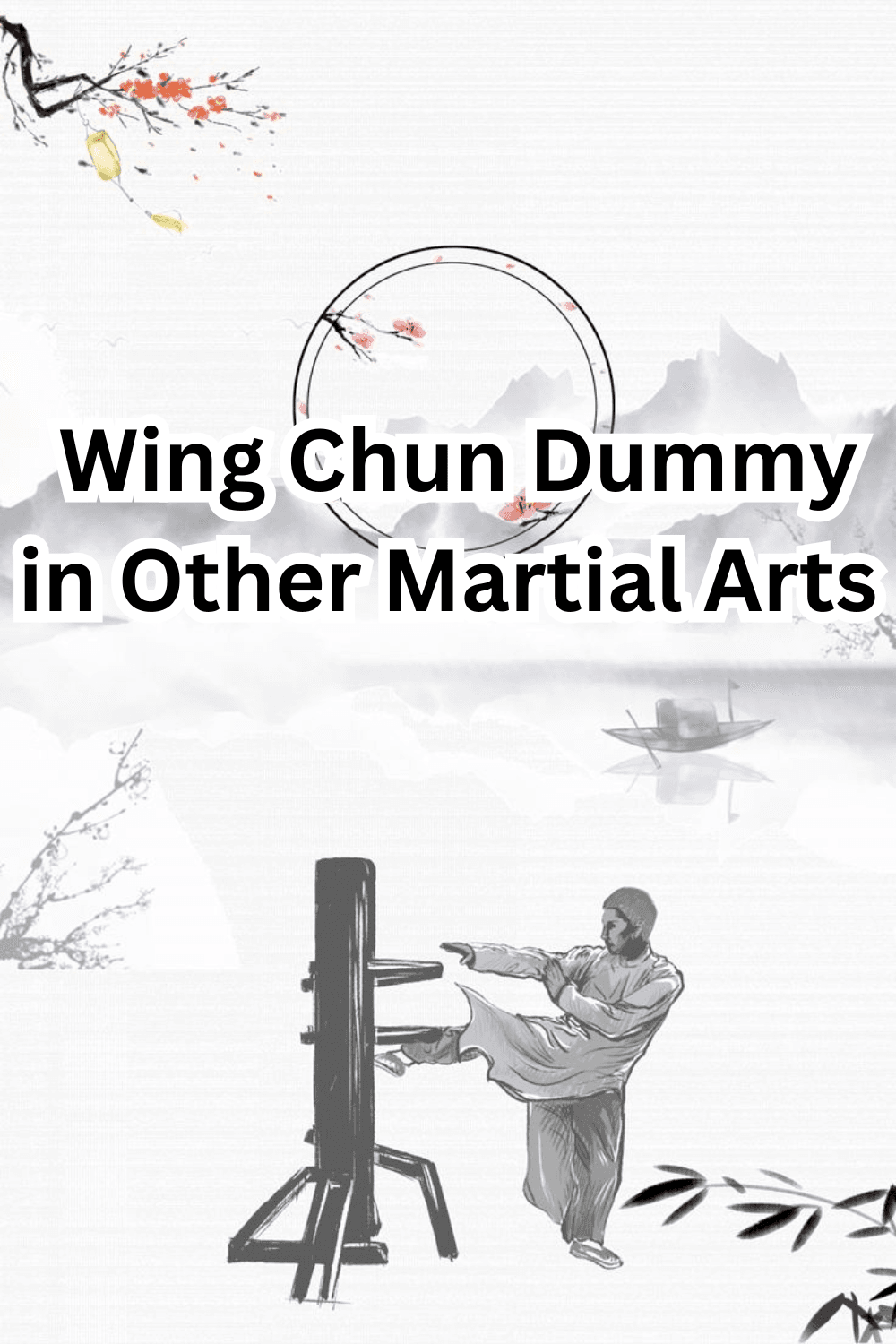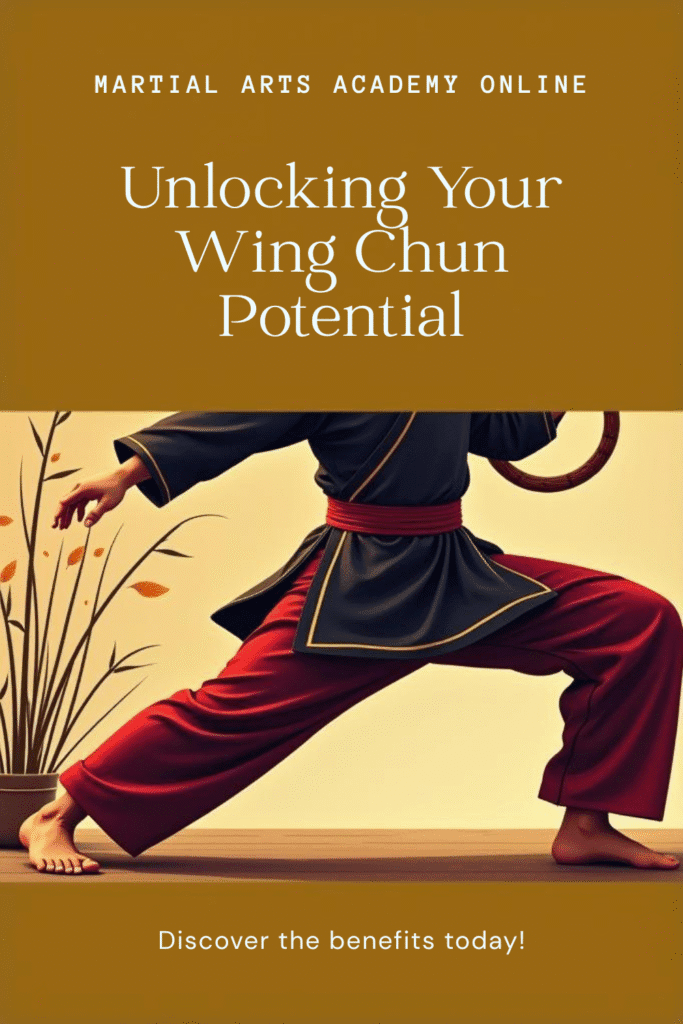Wing Chun Skills Improvement
Wing Chun is a traditional Southern Chinese martial art known for its unique approach to combat, emphasizing simplicity, directness, and efficiency.
Originating in the mid-17th century, Wing Chun was developed during a period of political upheaval in China.
Legend has it that the art was created by a Buddhist nun named Ng Mui, who synthesized her extensive knowledge of martial arts to craft an efficient and effective fighting style.
Wing Chun’s principles are deeply rooted in practicality and adaptability, making it a versatile art form suitable for various combat scenarios.
The modern history of Wing Chun is closely associated with the renowned martial artist Ip Man.
who played a pivotal role in popularizing the art in the 20th century.
Ip Man’s teachings laid the groundwork for Wing Chun’s international recognition.
And his most famous student, Bruce Lee, further catapulted the martial art into global awareness.
Bruce Lee’s adaptation and integration of Wing Chun techniques into his own fighting philosophy, Jeet Kune Do, highlighted the art’s core focus on direct, efficient movements and minimal wasted effort.
At its core, Wing Chun is built on foundational concepts that prioritize economy of motion and energy conservation.
The art employs a centerline theory, which posits that the most efficient path between two points is a straight line.
This principle underlies many of Wing Chun’s techniques, encouraging practitioners to strike directly and decisively.
Additionally, Wing Chun emphasizes simultaneous attack and defense, allowing practitioners to neutralize threats while mounting their own offensive actions.
Another significant aspect of Wing Chun is its reliance on sensitivity and tactile feedback, often cultivated through the practice of Chi Sau, or “Sticky Hands.”
This exercise trains practitioners to maintain continuous contact with an opponent.
enabling them to react instinctively to changes in pressure and positioning.
Through these fundamental principles, Wing Chun offers a pragmatic approach to self-defense, focusing on real-world applicability rather than elaborate or flashy movements.
The Role of Literature in Martial Arts

Literature has always played a pivotal role in the study and practice of martial arts, serving as a bridge between physical training and intellectual understanding.
Books, manuals, and other written resources complement hands-on training by providing a wealth of theoretical knowledge, historical context, and philosophical insights that are essential for a well-rounded martial artist.
One of the core benefits of engaging with martial arts literature is the enhancement of theoretical understanding.
Detailed explanations of techniques, principles, and tactics found in books allow practitioners to grasp the underlying mechanics and concepts that may not be fully conveyed through physical training alone.
This theoretical foundation supports more effective and thoughtful practice, leading to improved skills and a deeper comprehension of the art.
Moreover, literature offers valuable historical context, shedding light on the origins and evolution of martial arts.
Understanding the historical background of a discipline like Wing Chun, for example, provides practitioners with a sense of lineage and connection to the past.
This knowledge fosters respect for the tradition and helps students appreciate the reasons behind specific practices and techniques.
enriching their overall martial arts journey.
Philosophical insights are another crucial aspect of martial arts literature.
Many martial arts are deeply rooted in philosophical traditions that guide practitioners not just in combat, but in life.
Reading about these philosophies promotes a holistic approach to training, encouraging personal growth, discipline, and mental fortitude.
The integration of philosophy and practice helps martial artists develop a balanced mindset, which is as important as physical prowess in achieving mastery.
In summary, literature serves as an indispensable resource for martial artists.
offering theoretical, historical, and philosophical knowledge that complements and enhances physical training.
By delving into martial arts texts, practitioners can achieve a deeper understanding of the principles and techniques.
that define their discipline, ultimately leading to more profound skill improvement and personal development.
Types of Wing Chun Literature
Wing Chun literature encompasses a diverse range of texts, each serving a unique purpose in the cultivation of a practitioner’s knowledge and skills.
These texts can be broadly categorized into instructional books, historical accounts, philosophical treatises, and biographies of renowned Wing Chun masters.
Instructional books are perhaps the most directly applicable to improving one’s skills in Wing Chun.
These texts often provide detailed descriptions, illustrations, and step-by-step guides on various techniques, forms, and drills.
They are invaluable for practitioners seeking to refine their execution of movements and enhance their understanding of the martial art’s practical applications.
Such books can serve as supplementary material to formal training, offering insights that might not be covered in regular classes.
Historical accounts offer a deeper understanding of the origins and evolution of Wing Chun.
These texts chronicle the development of the martial art from its inception to its modern-day practice.
By studying these accounts, practitioners can gain a greater appreciation for the cultural and historical context in which Wing Chun was developed.
This knowledge can enrich a practitioner’s connection to the art and provide a broader perspective on its techniques and philosophies.
Philosophical treatises delve into the underlying principles and concepts that form the foundation of Wing Chun.
These writings often explore themes such as balance, harmony, and the integration of mind and body.
Understanding these philosophical underpinnings can significantly enhance a practitioner’s approach to training and application, fostering a more holistic practice that transcends mere physical execution.
Biographies of famous Wing Chun masters offer inspirational insights into the lives and journeys of those who have significantly contributed to the art.
These texts highlight the personal challenges, achievements, and teachings of notable figures.
providing valuable lessons that can motivate and guide practitioners in their own martial arts journeys.
In summary, the various types of Wing Chun literature each contribute uniquely to a practitioner’s development.
offering a comprehensive approach to mastering this intricate and profound martial art.
How Reading Enhances Technique Understanding
Reading Wing Chun literature serves as a valuable tool for deepening a practitioner’s comprehension of techniques.
Books and articles dedicated to Wing Chun often contain detailed explanations and diagrams that can significantly aid in clarifying the mechanics of movements.
These visual aids and descriptive passages provide insights that may not be as readily apparent during practical training sessions.
By studying these resources, practitioners can gain a nuanced understanding of the principles underpinning various techniques and identify common mistakes to avoid.
For example, the concept of the centerline theory, a fundamental principle in Wing Chun, is often elaborated upon in literature.
Through detailed textual descriptions and accompanying diagrams, practitioners can better grasp how to maintain control of the center line during combat.
Similarly, the intricacies of techniques such as the Chi Sao (sticky hands) can be demystified through comprehensive literary explanations.
Books often break down the movement into smaller, manageable components, illustrating how each part contributes to the overall effectiveness of the technique.
Another technique frequently discussed in Wing Chun literature is the Bong Sau (wing arm).
Descriptions in texts often highlight the importance of the elbow position and the angle of the forearm, aspects that might be overlooked during physical practice.
Literature can also emphasize the common errors practitioners make, such as raising the shoulder or misaligning the wrist, thus helping readers avoid these pitfalls.
The detailed nature of these explanations ensures that practitioners can refine their technique with a more informed approach.
In essence, reading Wing Chun literature allows practitioners to engage with the art form at a deeper intellectual level.
The combination of textual detail and visual representation enhances one’s ability to internalize and execute techniques with greater precision.
By integrating this knowledge into their physical practice.
practitioners can achieve a more comprehensive mastery of Wing Chun.
The Philosophical Aspect of Wing Chun
Wing Chun, a revered martial art, extends beyond physical techniques.
embracing a profound philosophical framework that is often explored through literature.
Central to Wing Chun philosophy is the concept of ‘Chi,’ or energy.
which underscores the importance of internal strength and the flow of life force within the body.
Literature on Wing Chun frequently delves into the cultivation and management of Chi.
emphasizing its role in achieving harmony and efficiency in martial movements.
By understanding and harnessing Chi, practitioners can enhance their physical performance and develop a deeper connection to their inner selves.
Another pivotal philosophical element in Wing Chun is the principle of ‘Yin and Yang,’ representing the dualities of life and the balance between opposing forces.
The literature often illustrates how Wing Chun techniques embody this balance, blending hard and soft, fast and slow, offensive and defensive movements.
This equilibrium is not only crucial in physical engagements but also in the mental and emotional realms.
Practitioners who grasp the essence of Yin and Yang can apply this duality to maintain calmness under pressure.
make strategic decisions, and adapt fluidly to changing circumstances both in practice and in life.
Mental discipline is a cornerstone of Wing Chun philosophy, as highlighted in various literary works.
The practice demands a high level of focus, mindfulness, and psychological resilience.
Literature on Wing Chun underscores the importance of mental fortitude.
illustrating how a disciplined mind can lead to more effective training and combat readiness.
By integrating these philosophical teachings, practitioners can cultivate a martial arts mindset that transcends physical prowess.
fostering personal growth, and a deeper understanding of the art.
In essence, the philosophical underpinnings of Wing Chun, as explored through literature.
offer invaluable insights that enrich a practitioner’s approach to the art.
By delving into concepts such as Chi, Yin and Yang, and mental discipline.
individuals can elevate their training experience and develop a holistic martial arts practice that integrates both body and mind.
Case Studies: Masters and Their Writings
Examining the writings of renowned Wing Chun masters provides invaluable insights into how literature can enhance one’s skills in this martial art.
Among the most influential figures is Ip Man, whose teachings laid the foundation for modern Wing Chun.
Ip Man’s written works, including his private notes and manuals.
offer a deep dive into the principles and techniques that define the art.
His emphasis on understanding the core concepts rather than merely replicating movements has helped countless practitioners develop a more profound mastery of Wing Chun.
Another pivotal figure in Wing Chun literature is Wong Shun Leung, a direct student of Ip Man.
Wong’s contributions are particularly noteworthy for their practical applications.
His writings often focus on real-world scenarios and how Wing Chun can be effectively employed in self-defense.
Wong Shun Leung’s analytical approach to Wing Chun has made his writings an essential resource for those looking to refine their techniques.
His personal anecdotes, such as his famous “beimo” (challenge fights).
provide compelling evidence of the effectiveness of Wing Chun when applied correctly.
Beyond these legends, other masters like Bruce Lee have also left a significant mark through their writings.
Although Bruce Lee eventually developed his own martial art, Jeet Kune Do.
his early works and notes on Wing Chun offer a unique perspective on the adaptability and evolution of martial arts.
Lee’s emphasis on fluidity and adaptability in combat can be seen as an extension of Wing Chun principles, demonstrating the art’s versatility.
These case studies illustrate that reading Wing Chun literature is not merely an academic exercise but a practical tool for skill enhancement.
The detailed explanations and personal experiences shared by these masters serve as a guide for both beginners and advanced practitioners.
By studying their writings, one can gain a deeper understanding of the art.
which can lead to significant in both technique and overall martial prowess.
Integrating Literature with Physical Practice
Combining reading Wing Chun literature with physical practice can significantly enhance your skills and deepen your understanding of this martial art.
To effectively integrate theoretical knowledge into your training routine, consider setting aside dedicated time for reading.
Allocate specific sessions within your weekly schedule to focus solely on studying the principles and techniques described in Wing Chun texts.
This structured approach ensures that you consistently engage with the literature without compromising your hands-on practice.
When reading, take detailed notes on key concepts, techniques, and philosophical insights.
These notes will serve as valuable references during your training sessions.
For instance, if you come across a particular stance or movement in the literature, jot down its description and purpose.
During your physical practice, refer back to these notes and consciously apply the learned concepts.
This method reinforces your comprehension and helps you internalize the theoretical aspects of Wing Chun.
Experienced practitioners often recommend discussing your readings with fellow students or instructors.
Engaging in conversations about the literature can provide new perspectives and clarify any ambiguities.
Moreover, watching instructional videos or attending seminars that align with the topics you’ve read can further solidify your understanding.
Visual and auditory learning can complement the written word.
making it easier to translate theory into practice.
Balancing study and training requires a disciplined approach.
Ensure that your reading sessions do not overshadow your physical practice.
The goal is to create a harmonious relationship between the two.
For example, after reading about a specific technique.
immediately incorporate it into your training routine.
This immediate application bridges the gap between theory and practice.
allowing you to experience the effectiveness of the technique firsthand.
In summary, integrating Wing Chun literature with physical practice involves a thoughtful combination of dedicated reading time.
meticulous note-taking, and active application of learned concepts.
By maintaining a balance and seeking insights from experienced practitioners.
you can enrich your Wing Chun journey and achieve a more profound mastery of this martial art.
Conclusion: The Value of Wing Chun Literature

In summary, incorporating Wing Chun literature into your training regimen offers a myriad of benefits that can significantly enhance your skills and understanding of this martial art.
Through reading, practitioners gain access to the rich historical context.
theoretical foundations, and nuanced techniques that are often glossed over in practical training sessions.
By delving into reputable sources, students of Wing Chun can develop a more rounded and comprehensive grasp of the art.
which can translate into improved performance and deeper appreciation.
Approaching Wing Chun literature with an open and analytical mind allows practitioners to critically evaluate different perspectives and methodologies.
This intellectual engagement not only broadens one’s horizon.
but also fosters a more adaptable and innovative approach to training.
Reading authoritative texts can help clarify complex concepts and offer new insights that might not be immediately apparent through physical practice alone.
Furthermore, literature can serve as a valuable reference point for refining techniques and strategies.
providing a solid foundation upon which to build one’s skills.
For those looking to deepen their understanding of Wing Chun through literature.
it is advisable to seek out works by recognized experts and historical texts that have stood the test of time.
Authors such as Ip Man, Wong Shun Leung, and others offer profound insights that can significantly aid in one’s martial journey.
Additionally, contemporary publications that analyze and interpret classical teachings can also be highly beneficial.
Ultimately, the integration of Wing Chun literature into your training routine is not just about amassing knowledge.
it is about cultivating a holistic understanding that enriches both the mind and body.
By doing so, practitioners can achieve a higher level of mastery and appreciation for this venerable martial art.



